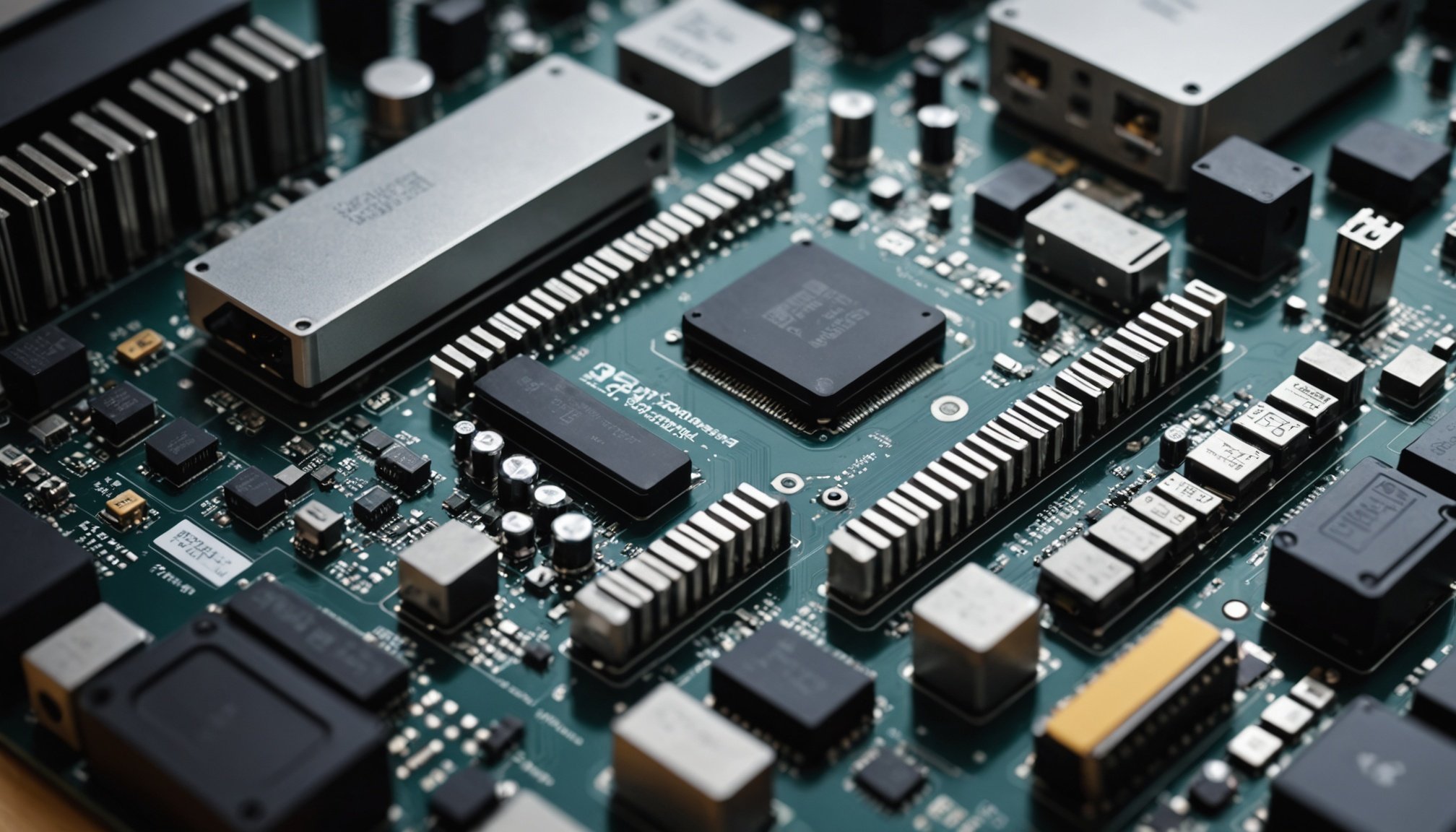Major Advancements in Modern Computing Hardware
Recent advancements in computing hardware have revolutionized how we process information. Among the most groundbreaking innovations in computing hardware is quantum computing, which is moving beyond theory into practical applications. Quantum processors harness quantum bits, or qubits, to perform certain complex calculations exponentially faster than classical computers. This promises transformative impacts on cryptography, optimization, and drug discovery.
Another breakthrough comes from AI accelerators—specialized chips designed to optimize machine learning workloads. These accelerators improve efficiency by performing parallel computations more effectively, reducing power consumption while boosting speed. As a result, devices from data centers to smartphones can now process AI tasks locally, enabling smarter, faster applications.
Also to see : What Innovations Are Expected in the Future of UK Computing Hardware?
Neuromorphic chips, inspired by the structure of the human brain, represent the frontier of next-generation technologies. These chips use artificial neurons and synapses to mimic neural networks, allowing machines to learn and adapt with remarkable efficiency. Such hardware innovations aim to overcome limitations of traditional architectures, opening new pathways in edge computing and autonomous systems.
Together, these advancements mark an exciting era of cutting-edge computing hardware designed for scalability and intelligence.
Have you seen this : What are the latest trends in UK computing hardware for education?
The Role of Advanced GPUs and Specialized Processors
Advanced GPUs have become central to the evolution of AI hardware and hardware acceleration. Their performance improvements have significantly boosted the capacity for both AI tasks and high-end graphics rendering. GPUs are uniquely suited for parallel processing, enabling them to handle thousands of operations simultaneously. This makes them invaluable for deep learning, where large amounts of data require rapid and repeated calculations.
Specialized processors, including tensor processing units (TPUs) and neural network accelerators, complement advanced GPUs by offering even greater efficiency. These hardware accelerators are designed to optimize specific AI workloads, reducing latency and energy consumption compared to general-purpose processors. For instance, TPUs have been widely deployed in cloud services to speed up machine learning model training and inference.
Real-world deployments of these processors span industries from autonomous vehicles to medical imaging, highlighting their versatility. These advancements not only power complex deep learning algorithms but also enable scientific computation that demands massive data throughput. Embracing specialized processors ensures faster, more reliable AI applications capable of meeting evolving computational requirements.
3D Chip Stacking and Heterogeneous Integration
Advancements in 3D chip stacking have revolutionised chip design innovations by enabling vertical integration of multiple layers of silicon wafers. This approach significantly improves processing speed and density by reducing the distance data must travel between components. Unlike traditional planar layouts, vertical stacking promotes efficiency and higher performance in compact spaces.
Heterogeneous integration complements 3D chip stacking by combining diverse chip types—such as logic, memory, and sensors—into a single package. This optimised workload distribution allows designers to tailor solutions for specific applications, from AI accelerators to mobile devices. By integrating various technologies, manufacturers can deliver improved energy efficiency and functionality.
However, these breakthroughs present challenges, primarily in manufacturing complexity and heat dissipation. Precision in aligning stacked dies and ensuring reliable interconnects is crucial. Innovative cooling methods and materials are also vital to maintaining system integrity. Despite these hurdles, ongoing research continues to push the boundaries of chip design innovations with promising results that point toward the future of high-performance computing.
Energy Efficiency in Processor Design
Empowering innovation through sustainable computing
Energy-efficient processors are key drivers of sustainable computing. These processors balance reducing power consumption with increasing performance, significantly lowering the environmental footprint of modern technology. Recent advances in semiconductor manufacturing, like smaller transistor sizes and new materials, enable chips to operate faster while consuming less energy.
Emerging technologies such as FinFET and gate-all-around transistors improve electrical efficiency by minimizing leakage currents. Green hardware designs focus on dynamic voltage and frequency scaling, allowing processors to adjust power usage based on task demands. This adaptability extends battery life in portable devices and cuts operational costs in large data centres.
Data centres benefit the most from energy-efficient processors. Reduced heat generation lessens cooling requirements—an important factor since cooling accounts for a significant portion of data centre energy use. Implementing green hardware in such facilities leads to more sustainable operations without sacrificing performance.
For everyday technology users, energy-efficient processors mean longer device runtimes, quicker computations, and an eco-friendlier footprint. As development continues, these processors will be central to achieving global energy savings while meeting growing computational demands.
Future Trends and Potential Impact
The future of computing hardware is poised for transformative shifts driven by advances in materials, architecture, and energy efficiency. Notably, hardware trends indicate a move towards specialized processors like AI accelerators and quantum computing units. These innovations promise to redefine the capabilities of next-gen computing outlook, accelerating tasks that were previously unattainable.
Experts predict that ongoing breakthroughs in hardware trends will usher in devices with remarkable speed and power efficiency. For example, neuromorphic chips—modeled on the human brain—offer potential solutions to complex problems while consuming minimal energy. This emerging concept exemplifies the broader trajectory toward hardware tailored for specific workloads rather than traditional, general-purpose processors.
The predicted influence of current innovations extends beyond performance. As computing hardware evolves, it will enable new applications in fields like autonomous vehicles, personalized medicine, and immersive virtual environments. Embracing these technologies requires an understanding of how the next-gen computing outlook will shape software design and user expectations.
In summary, the evolution of hardware today sets the foundation for a technology ecosystem that is faster, smarter, and more adaptive than ever before.






